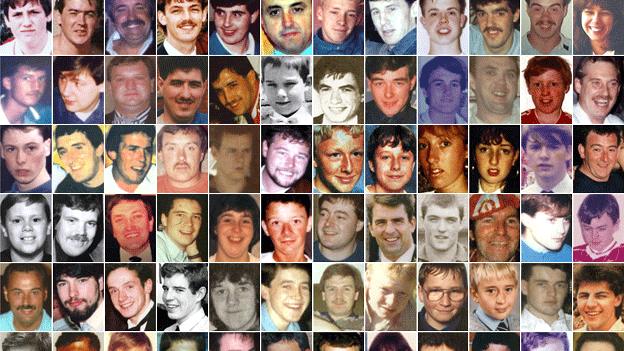Five Hillsborough myths dispelled by inquests jury
- Published
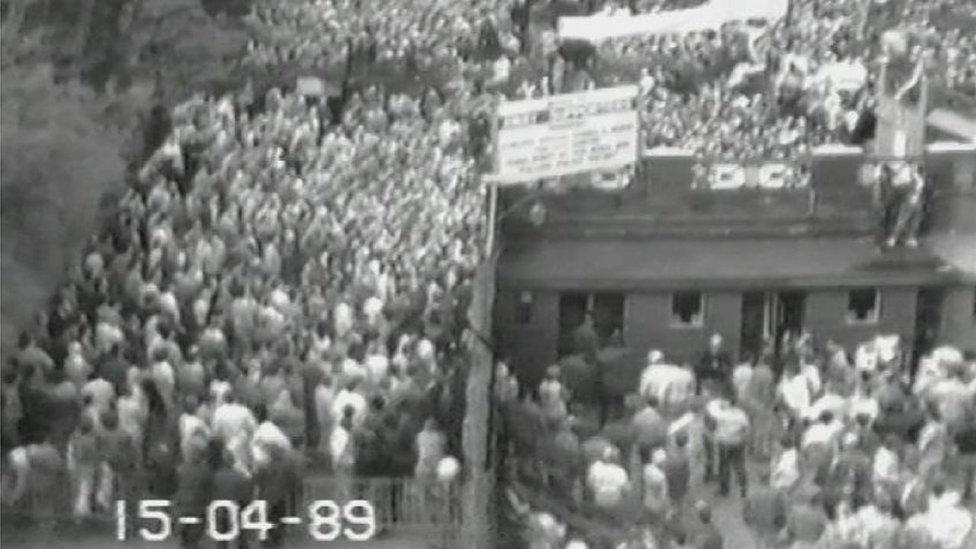
The alleged behaviour of fans lay at the heart of the myths rejected by the inquests
Five myths about Liverpool fans' behaviour on the day of the Hillsborough disaster were among the main obstacles for families seeking justice. What do we now know about how they were perpetuated?
The Hillsborough inquests jury concluded it was police - not fans - who caused or contributed to the deaths of 96 men, women and children who it said were unlawfully killed following a series of failures by police, the ambulance service, as well as defects in the stadium.
The behaviour of supporters, the jury said, played no part in the 1989 disaster, external.
The families campaigned for 27 years for the truth despite lies told by senior officers, slurs in national newspapers and an alleged police cover-up to deflect blame on to supporters.

Myth 1: Liverpool fans arrived 'late and without tickets'
After the disaster, allegations emerged from "unnamed sources" - later established to be a Police Federation spokesman and the Sheffield Conservative MP, Irvine Patnick - claiming Liverpool supporters had "deliberately arrived late determined to force entry" to the ground.
What we know: While many Liverpool supporters did arrive after 14.30, evidence to the inquests suggested it was actually the police "failure to control the crowd" and "inadequate" turnstiles that led to the fatal crush.
The claim that fans had "deliberately arrived late" formed the basis of the "rock solid" defence South Yorkshire Police [SYP] sought to present at the 1989 Taylor inquiry into the disaster. The aim was to "deflect blame on to supporters" and exonerate the police.
The jury heard from former South Yorkshire Police inspector Clive Davis who recalled being told by former Ch Supt Terry Wain "to put the blame for this disaster where it belongs: on the drunken, ticketless Liverpool fans". This was denied in evidence by Mr Wain. However, he admitted a report he prepared had exaggerated claims that "several thousand" spectators had arrived at the ground within minutes of kick-off.
The inquests heard the 10,100 fans with standing tickets for the Leppings Lane end were expected to enter through just seven turnstiles, causing congestion outside the ground.
Lord Justice Taylor, in his 1990 report into the disaster, concluded fans were reasonable to arrive between 14.30 and 14.40 as match tickets only requested people be in their places "15 minutes before the game". He was also satisfied that the large concentration of fans who gathered at Leppings Lane at 14.40 to 14.50 "did not arrive as a result of any concerted plan", external.
He concluded that police had "failed" to prepare for controlling the arrival of a large number of fans in a short period. Both the club and police "should have realised the turnstile area could not easily cope with the large numbers demanded of it" unless they arrived steadily over a lengthy period.
He accepted there were "small groups without tickets" looking to "exploit any chance of getting into the ground". But the main problem was simply one of "large numbers packed into the small area outside the turnstiles". He stated categorically that "fans' behaviour played no part in the disaster".
The Hillsborough Independent Panel (HIP) report concluded crowd congestion outside the stadium was "not caused by fans arriving late" for the kick-off, external. The turnstiles, it said, were "inadequate to process the crowd safely" and the rate of entry insufficient to prevent a dangerous build-up outside the ground.
What the jury said: The behaviour of Liverpool supporters did not cause or contribute to the dangerous situation, external at the Leppings Lane turnstiles.

Myth 2: 'Drunken fans caused the disaster'

Police tried to shift the blame for the disaster onto "drunken" fans but the inquest jury did not agree
Myth: In the days following the tragedy, some newspapers reported that a "crazed surge" of Liverpool fans, many the "worse for drink, others without tickets" had raced to the stadium causing the deaths of 96 people in the stadium. Reports quoted police witnesses describing fans as "lager-louts" or even as "animals".
What we know: The chief constable of South Yorkshire Police at the time of the Hillsborough disaster told officers if anyone was to blame it was "drunken ticketless" fans. The comments by Sir Peter Wright were revealed in minutes from a South Yorkshire Police Federation meeting, held four days after the 1989 tragedy.
They were read to the inquests jury during evidence from Paul Middup, who was then the federation's secretary. Mr Middup was quoted in several newspapers in the days following the 15 April 1989 disaster, claiming some supporters at the Liverpool versus Nottingham Forest match had been "tanked up".
A number of police officers told the inquests that fans were drinking before the match. One of them, a Sgt Lomas, said he had never before seen so much alcohol consumed before a match, external - "beer, cider, wine, big bottles, cans, carafes of wine; a wide array of different drink". Some fans were "unsteady on their feet", he told the jury.
The Hillsborough Inquests heard an allegation that former SYP chief inspector Sir Norman Bettison had been asked to "concoct a story" that "all the Liverpool fans were drunk and that we were afraid they were going to break down the gates, so we decided to open them". This was strongly denied by Sir Norman.
The Taylor Report, while accepting there was a "drunken minority" of fans, said they did not cause the congestion at the turnstiles. The coroner Sir John Goldring told the jury that more than half of the victims of the disaster had either no alcohol in their blood or an amount which was entirely negligible. Most of the others had levels "consistent with only modest social drinking before a sporting event".
His 1989 report said that, while many supporters who arrived at 2.30pm or after, had been drinking, the great majority "were not drunk nor even the worse for drink". Evidence from shops and off licences on the way to the ground "did not suggest a great amount of alcoholic drink was bought there".
Others described a generally normal crowd with an uncooperative minority who had drunk too much. In his view, "many officers overestimated" the drunken element in the crowd. He concluded that "drunkenness played no part in the disaster".
The HIP report found that, of the 95 individuals who died as an immediate result of the disaster, only six had alcohol levels at which they may have been expected to show "signs of being intoxicated". The recording of blood alcohol levels in victims and questioning of bereaved families about their drinking habits proved highly controversial and upsetting at the time.
The panel also found "no evidence... to verify the serious allegations of exceptional levels of drunkenness, ticketlessness or violence among Liverpool fans".
What the jury said: The jury found nothing to suggest that the behaviour of fans, drunken or otherwise, contributed to the disaster.

Myth 3: Supporters 'forced an exit gate'
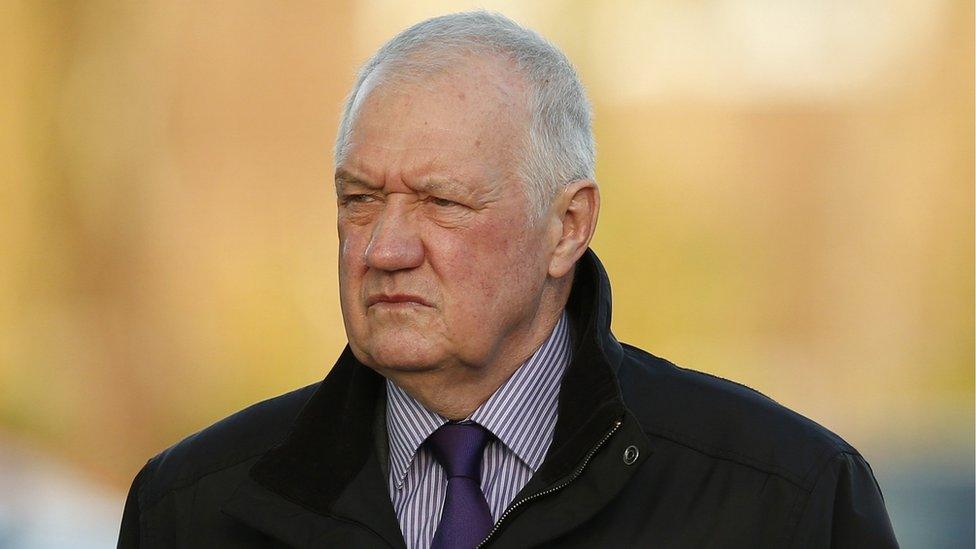
Ch Supt David Duckenfield admitted that he lied when told key people at Hillsborough that fans had "forced a gate"
Myth: The sudden inrush of 2,000 fans which led to the fatal crushing on the terraces was caused by Liverpool fans who "forced a gate" to enter the stadium. This was a lie told by match commander David Duckenfield.
What we know: How so many fans entered the ground just a few minutes before kick-off lies at the centre of the Hillsborough disaster. The allegation that fans had forced their way in through exit gate C came from match commander David Duckenfield. However, he admitted at the inquests that this had been a lie.
Knowing full well that it was he who had ordered the gate to be opened, he instead told the FA Chief Executive Graham Kelly and the Sheffield Wednesday FC club secretary Graham Mackrell in the police control box that "a gate had been forced and there had been an inrush of Liverpool supporters". This lie was later presented to the media as the official police version of events and heavily influenced newspaper reports of the tragedy.
Giving evidence at the Hillsborough Inquests, Mr Duckenfield admitted: "Everybody knew the truth. The fans and police knew the truth that we'd opened the gates." The jury was asked to consider why he lied - whether it was in panic or fear of public disorder. Or because Mr Duckenfield knew his actions beforehand were responsible for the crushing in the pens. Mr Duckenfield also admitted failing to tell Mr Kelly and Mr Mackrell that it was his order to open the exit gate C - a "lie by omission", he told the jury.
The inquests were told that Mr Duckenfield's lie, shared in good faith with the media by the FA chief executive Graham Kelly, external, led to some seriously inaccurate reporting of events.

Myth 4: 'Hooliganism caused the Hillsborough disaster'

Perimeter fencing was added at Hillsborough in 1977 to prevent possible pitch invasions
Myth: The fatal crush was caused by a "crazed surge" of Liverpool football hooligans, some newspapers reported.
What we know: Preventing and controlling crowd disorder had a "profound effect on football" in the 1970s and 1980s, Sir John Goldring, the coroner at the inquests stated. Four years before the disaster, a group of Liverpool fans were blamed for causing the Heysel disaster, in which 39 Juventus supporters died when a wall collapsed at the 1985 European Cup Final in Brussels. In his summing up, Sir John reminded the jury that the scourge, known as "the English disease", external, was a serious problem at the time. During the early 1970s, fighting between fans and pitch invasions made it necessary to prevent access to the playing area and the perimeter fences were erected at grounds like Hillsborough in 1977.
However, he said that Liverpool supporters "did not have a reputation for violence" and told jurors "there is no suggestion that the Hillsborough disaster was caused by hooliganism", external.
By the time of the 1989 semi-final, the fear of hooliganism was still a "major problem" and had a huge bearing both on the police planning for the match and the design of the stadium, the inquests heard. This was evident from the police Operational Order for the match which emphasised the "prevention of disorder" and in particular "prevention of access to the field of play".
The report by the Hillsborough Independent Panel said that, while safety was a concern for police, the "prevention of hooliganism" and "public disorder" was the main priority. The practice of packing the pens was "concerned primarily with controlling the crowd", it said. In evidence, Mr Duckenfield conceded that operational police orders placed "more emphasis on preventing disorder than public safety".
Lord Justice Taylor was clear in his interim report that "hooliganism" played no part in the 1989 disaster. On the contrary, it was the fear of hooliganism in police circles that led to "an imbalance between the need to quell a minority of troublemakers and the need to secure the safety and comfort of the majority".

Myth 5: Fans 'urinated on police' and 'stole from the dead'
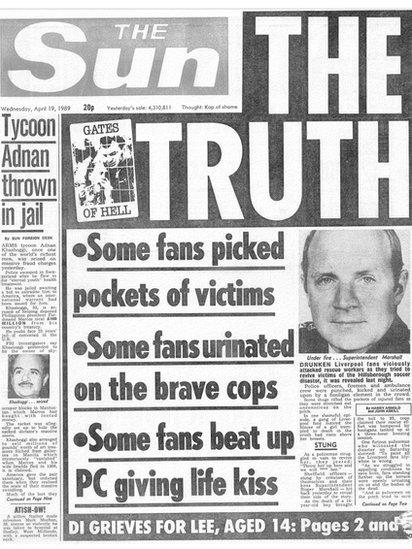
Myth: Four days after the disaster, The Sun newspaper published its now infamous front page under the headline "The Truth" claiming some fans had "picked the pockets of victims" and had "urinated on a woman police officer" who was trying to help the dying. Other regional and national newspapers published similar allegations, although less prominently.
What we know: The article was based on a story filed by White's news agency in Sheffield that quoted "unnamed officers" as well as the Conservative MP for Sheffield Irvine Patnick. This slur on fans' behaviour originated from police inspector Gordon Sykes who, while giving evidence at the inquests, admitted sharing unfounded allegations by Hillsborough officers with Paul Middup, the secretary of the South Yorkshire Police Federation, and Mr Patnick. White's later admitted that the source of the "unsolicited" claims came from four "high ranking" SYP officers.
At the inquests, Mr Sykes accepted The Sun's story was "unfair" and a "distortion" of what happened and that he regretted sharing unfounded allegations he made about Liverpool fans pick-pocketing the dead. He told the jury he had reported what he heard in 1989 and had "honestly believed" the allegations were true.
Mr Sykes agreed there was a mood among the police that they were being "blamed for the entirety of the tragedy" and officers felt that should be "addressed". He also agreed with Paul Greaney QC, who represents the Police Federation, who said that mood was "was being driven by the Chief Constable himself".
In 2012, the former Sun editor Kelvin McKenzie apologised to the people of Liverpool for The Truth headline saying he had been "misled". In a statement, he said: "These allegations were wholly untrue and were part of a concerted plot by police officers to discredit the supporters thereby shifting the blame for the tragedy from themselves.
"It would have been far more accurate had I written the headline The Lies rather than The Truth," he said.
Related topics
- Published26 April 2016
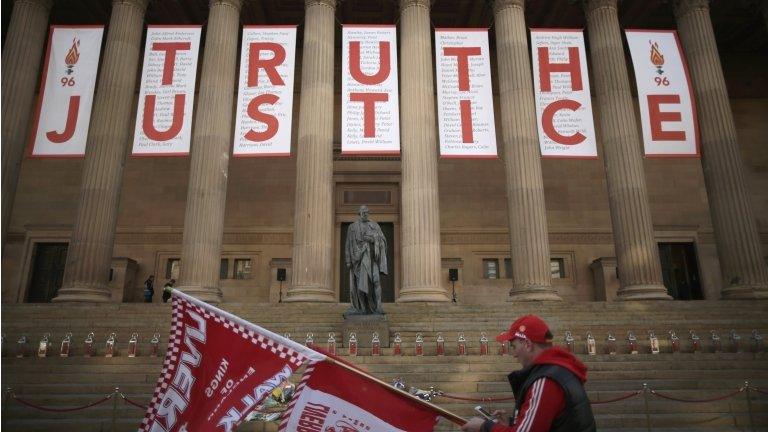
- Published26 April 2016
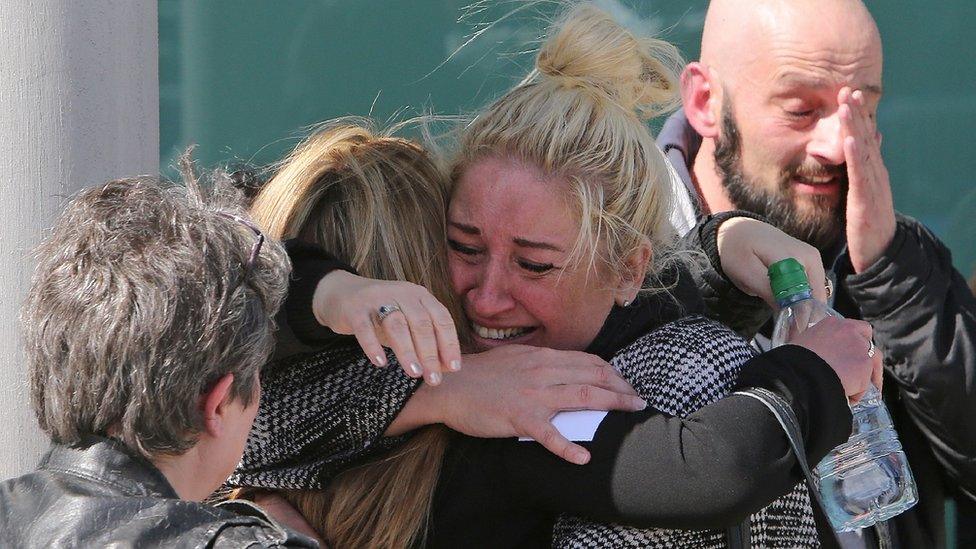
- Published26 April 2016
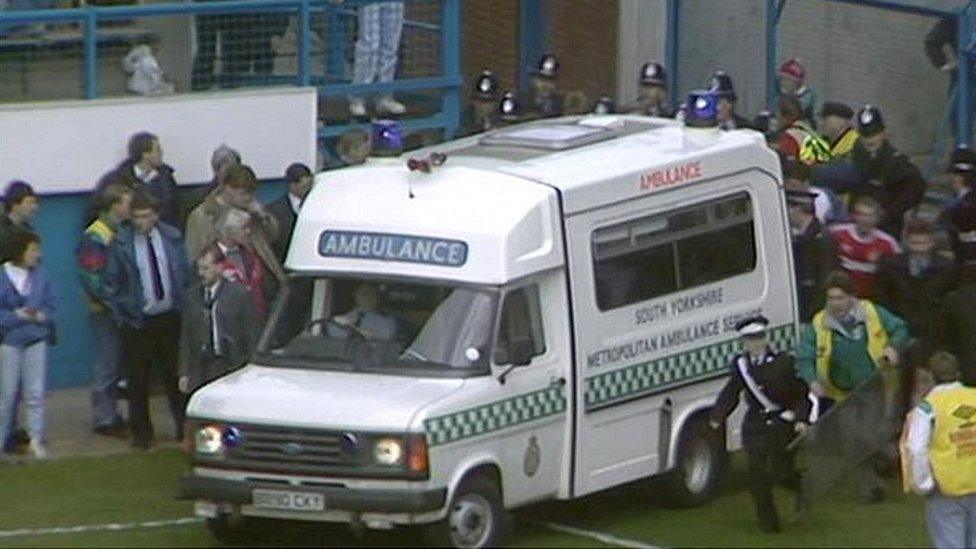
- Published26 April 2016
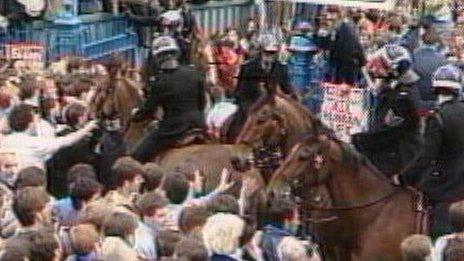
- Published26 April 2016
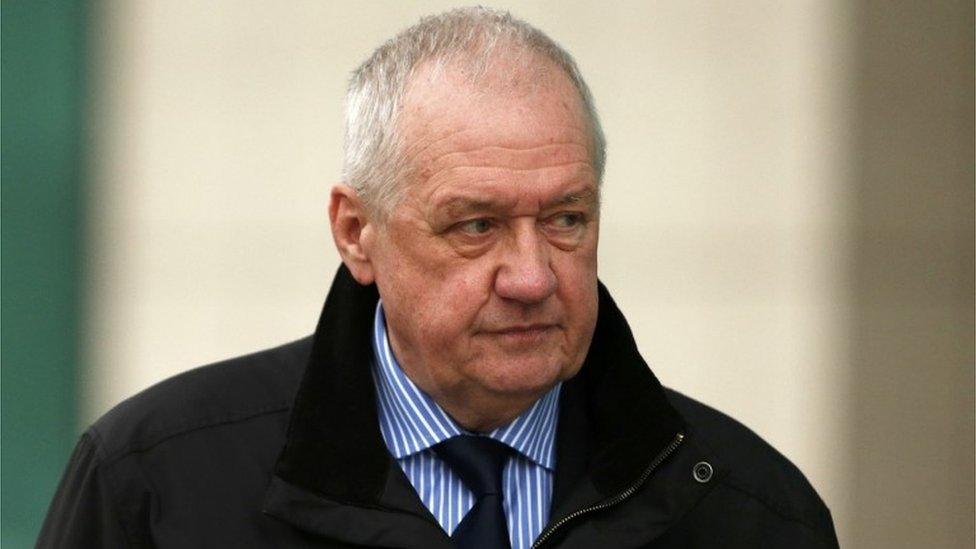
- Published26 April 2016
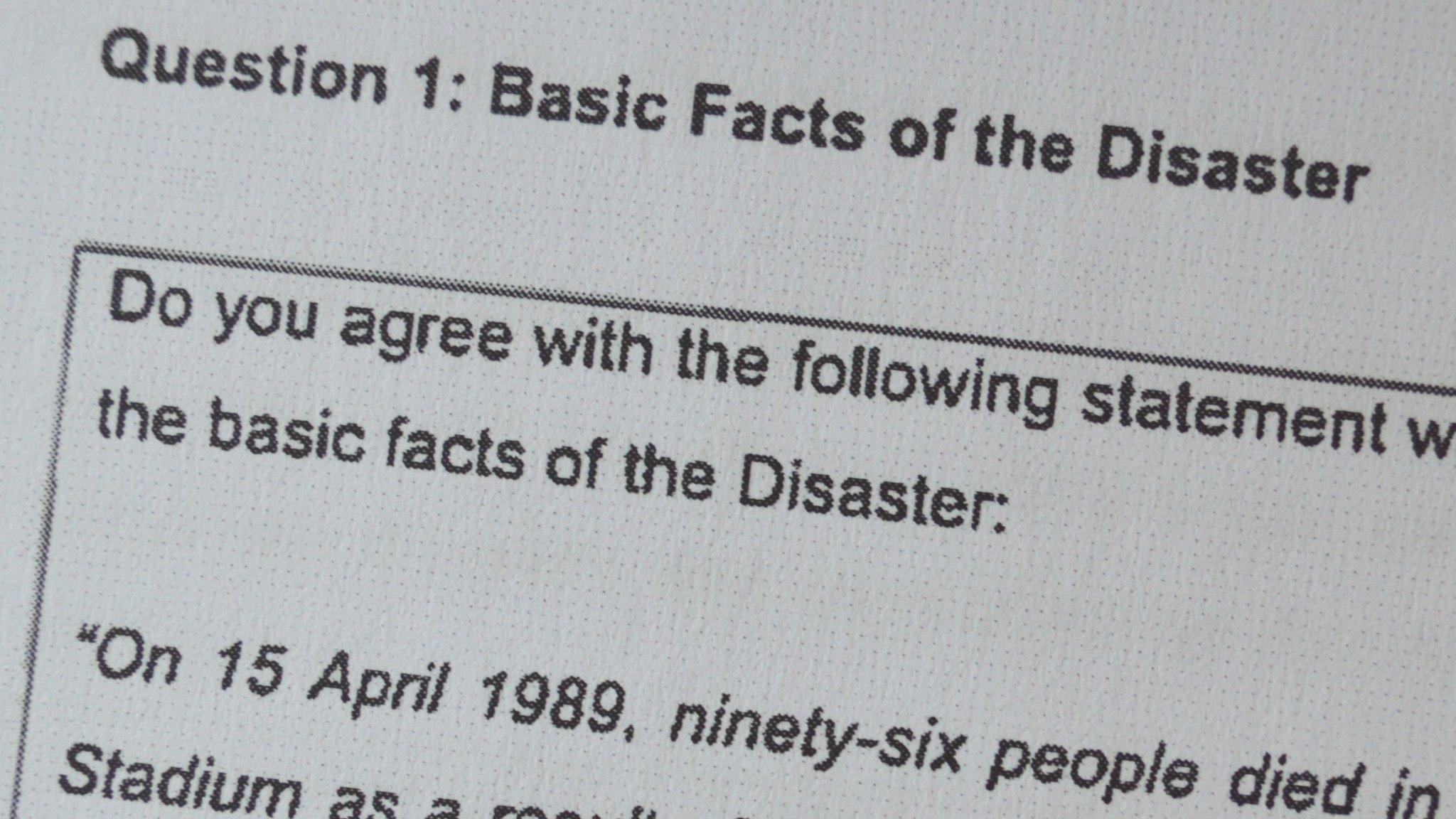
- Published26 April 2016
